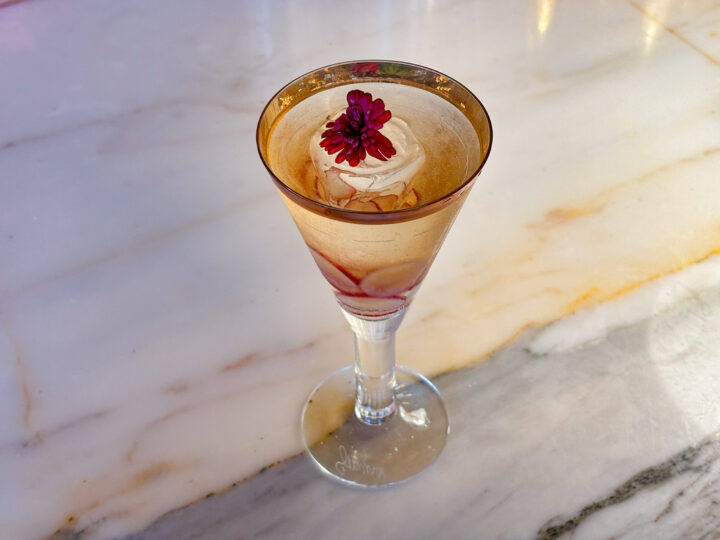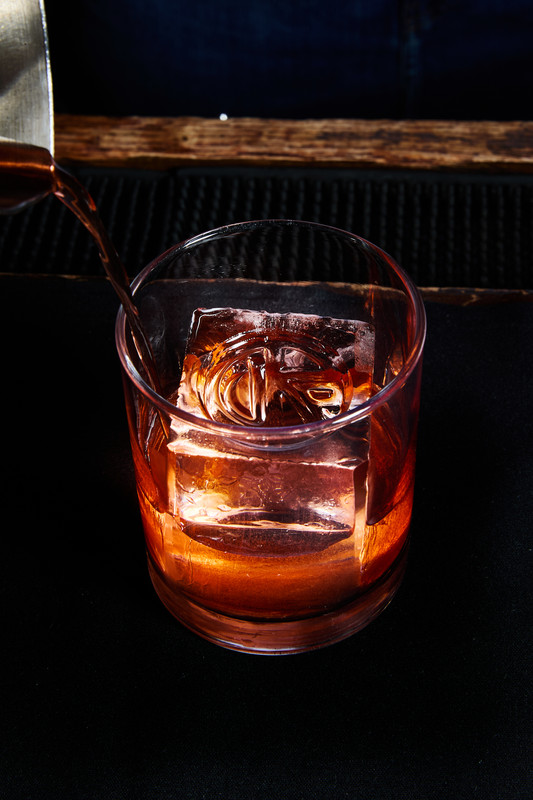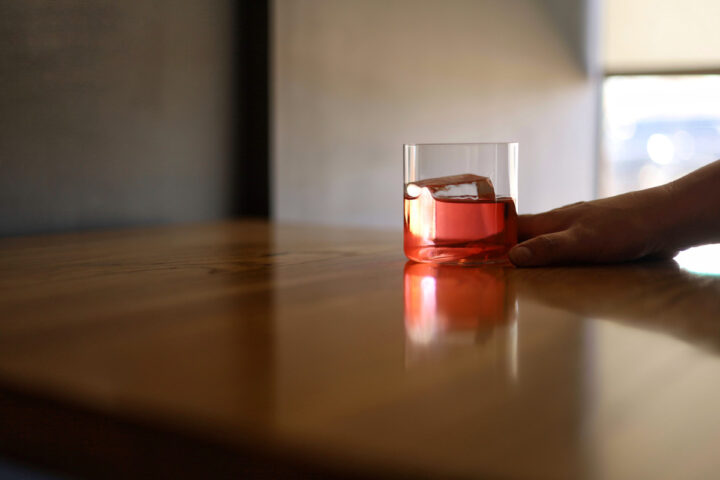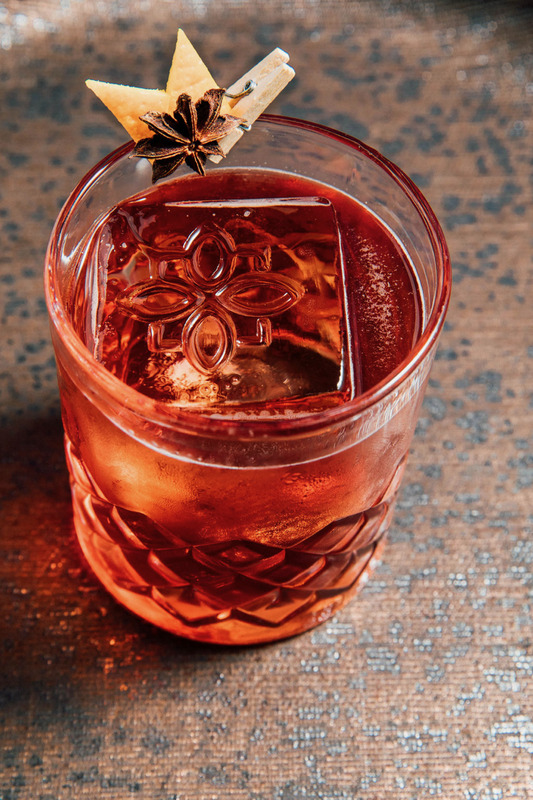
Though its exact origins are contested, the Negroni has been around for many decades, if not an entire century. But the stirred combination of equal parts gin, Campari aperitif, and sweet vermouth only really hit its stride in the U.S. bar scene recently. “It started to gain real traction in the U.S. around the early 2000s, thanks to the broader craft cocktail renaissance— bartenders and enthusiasts embraced its simplicity, balance, and versatility,” says Tony Edgerton, former beverage director for Apicii Hospitality, which owns several restaurant and bar concepts across the country.
As soon as the Negroni hit the modern cocktail scene, it took off. “By the 2010s, creative riffs on it—like the White Negroni and the Boulevardier—became incredibly popular,” says Erika Copeland, bar manager at Restaurant Olivia in Denver. “Notably, in 2009, Jeffrey Morgenthaler’s barrel-aged Negroni at Clyde Common in Portland, Oregon, made waves across the country. Around the same time, Gaz Regan became legendary for stirring Negronis with his finger, further cementing its place in cocktail culture. And in 2013, the launch of Negroni Week, a charity fundraiser sponsored by Campari, elevated the drink’s profile even further.”
Jessica King, co-owner of Brother Wolf in Knoxville, Tennessee, adds that the “world’s largest Negroni” event at Tales of the Cocktail in 2011 also affirmed the drink’s popularity. “It was no longer a niche drink for the fringes but an assumed favorite of bartenders and enthusiasts alike,” she says. “But even during that mass wave of enthusiasm, the world at large didn’t appear to fully recognize or appreciate the Negroni for many years yet—only really in the past four or five years have I seen the majority of bar guests in our smaller market begin to request the drink. The general public’s perception of the Negroni seems to have shifted from mystery to somewhat commonplace enjoyment, which is something I never thought I’d be able to say some 13-15 years ago.” Indeed, as consumers continue to embrace more adventurous flavor profiles, the Negroni and creative riffs on it have become integral to cocktail menus across the country.
Bittersweet Balance
When Derek Crow, lead bartender at Brezza in Resorts World Las Vegas, first tried a Negroni, he says he initially had difficulty processing the complexity of its flavors. “That first sip was over 12 years ago and I was intrigued—all this flavor from just three ingredients? How?” he recalls. “My first Negroni easily turned into two. It’s bold, it sits on your tongue, and it lingers. The soft, bitter orange notes from the Campari, sweet vanilla notes from the vermouth, and sharp flavors of citrus and juniper from the gin felt like three evenly built pillars of flavor were all balanced perfectly on my palate.”
Since then, making Negronis and Negroni riffs is an ingrained part of Crow’s job as a bartender. His Barrel Aged Negroni ($25) blends equal parts Bols genever and Four Pillars Navy Strength gin, plus Meletti Bitter liqueur, Punt e Mes vermouth, and Carpano Antica Formula vermouth, and it’s aged between five and six weeks. “This cocktail took quite some time to research and develop—my idea was to make a bold riff on the Negroni for the Negroni drinker and it’s been very popular,” Crow adds. “My biggest complaint with Negroni-style cocktails that come out today is when someone keeps adding more ingredients, resulting in something that can be delicious but is not even close to what a Negroni is supposed to be. The beauty of the Negroni is its simplicity.”
Edgerton similarly points to the Negroni’s simplicity as key to its popularity, along with its versatility and bold flavor profile. “It’s easy to make but feels sophisticated and rewarding,” he says. “The balance of bitter and sweet, with just three primary ingredients, makes it approachable for both new drinkers and seasoned aficionados. Plus, the adaptability and creative possibilities keep it relevant and exciting year after year.” At Apicii’s Breva Bar & Grill in Minneapolis, Edgerton’s Wild Rice Negroni ($14) comprises equal parts Fords gin, Campari, and Cocchi di Torino vermouth, all of which are stirred with a bar spoon of cooked wild and white rice, which is strained out before serving. “The rice adds texture and depth for a Negroni that’s both innovative and grounded in the classic profile, offering a sensory twist that resonates with adventurous drinkers,” Edgerton adds.

Restaurant Olivia’s Copeland notes that playing with the ingredient amounts in the Negroni is a simple way to change up the original recipe. “For a traditional Negroni, sticking to equal parts is a solid foundation; at Restaurant Olivia, however, we like to amplify the base spirit and tweak the ratios slightly to create a more balanced drink—1½ ounces gin, ¾ ounce Campari, and ½ounce vermouth,” she says. “Adjusting the proportions can make the drink more approachable for those newer to its bold profile while still keeping the drink quintessentially bitter.” Restaurant Olivia’s House Negroni ($16), which Copeland created, blends Family Jones House gin, Campari, Cappelletti and Lillet Rouge aperitifs, saline, and house-made orange bitters, while the Gloria ($17), by bar director and co-owner Austin Carson, mixes lacto-fermented strawberry-infused Tanqueray No. Ten gin, Luxardo Bitter Bianco liqueur, grapefruit-infused Campari, Giffard Crème de Pamplemousse Rose pink grapefruit liqueur, house-made strawberry top oleo saccharum, and house-made orange bitters.
In 2022, Brother Wolf launched “the world’s largest Negroni menu,” featuring 42 different takes on the drink, and in 2023 the bar team upped that figure to 51. “While building the menu our team had to really dissect the constructs of a Negroni,” King says. “We defined the foundational elements of the drink to be either of these: bitter plus fortified plus spirit or bitter plus sweet plus spirit. Using these metrics as a template, we were able to devise dozens of satisfying combinations using only the contents of the back bar.” From the menu, bar manager Willis Langley’s Cocchi Negroni ($14) comprises equal parts Cocchi Americano and Cocchi Rosa aperitifs plus equal parts Malfy and Malfy con Limone gins. “A Negroni is about balance, and it’s quite a serious drink not intended for the faint of heart,” King adds. “It’s unmistakable in its intention; you know you’re drinking a Negroni when drinking a Negroni. It’s a composition of very ‘adult’ flavors that hardly become less so when combined. But a good Negroni also follows the path often associated with springtime: in like a lion, out like a lamb. Upon first sip, it strikes as dangerously strong in taste. But as dilution takes its course, the strong notes soften, nuance begins to surface, and you’re left with swirls of the delightfully palatable.”
Kate Williams, bar director at Nostrana in Portland, Oregon, notes that while the Negroni has long been a popular classic, it’s gained significant traction in the past couple of years. “And its evolution has been not only that rise in popularity but also the continued variations you see pop up at seemingly every bar,” she says. “I like that the Negroni is timeless, has endless variations, and isn’t limited by the seasons—you can enjoy a Negroni on a big rock any time of year.” At Nostrana, bartender Clara Munro’s Grandma’s Porch ($18) features equal parts Malfy con Limone gin, Luxardo Bitter Bianco, and peach-infused Carpano Dry vermouth, while the Easy Street ($16), by Williams and bar manager Jessica Brown, is a non-alcoholic version blending Dhōs Free gin, Giffard Aperitif syrup, and Fusion Verjus Rouge.

“I think we can trace the most recent resurgence of the Negroni to 2022 when the ‘Sbagliato…with Prosecco’ video went viral—it definitely thrust that iteration into prominence,” says Phil Collins, beverage director of TableOne Hospitality, which owns numerous restaurants across the country, including Bar Sprezzatura in San Francisco. His own version of this, the Sbagliato…With Moscato ($18) at Bar Sprezzatura mixes equal parts Faccia Brutto Alpino amaro and Dimmi de Milano liqueur, plus La Morandina Moscato d’Asti. Collins adds that he appreciates that the Negroni can be adjusted to meet the needs of all types of drinkers. “For those who like sweeter cocktails, a Negroni can live in that world while still being approachable with the addition of a bitter component that guests typically wouldn’t consider; for those who like more moody and complex cocktails, the bitter component can play into that aspect while making the sweetener addition less prominent,” he says. “Additionally, with riffs outside of gin, guests who prefer whisk(e)y or mezcal have multiple iterations to play with.”
Connor Bovich, beverage director at Eberly in Austin, Texas, similarly enjoys how the Negroni can easily be altered while still remaining true to the classic. “Spirit, vermouth, and amaro are the three essential components when making any variation of a Negroni—the fact that you need those three ingredients for it to qualify as a Negroni allows you to tailor the cocktail to your palate, which could be sweet, herbal, spicy, smoky, or just about any combination of the like,” he says. At Eberly, the Boulevardier ($17), a classic Negroni riff, comprises Buffalo Trace Bourbon, Campari, and Cocchi di Torino. “As a fan of Bourbon cocktails this is one of my favorites—there’s a balance of heat from the whiskey, bitter from the Campari, and sweetness from the high-quality vermouth that allows the drinker to enjoy it before, during, or after dinner,” Bovich says. “We also offer a Negroni Bianco that has continued to sell well post Negroni week.” The drink ($15) mixes equal parts Hendrick’s gin, Luxardo Bitter Bianco, and Bordiga Bianco vermouth.
“Since I’ve been in hospitality, the Negroni has been a consistent call—it’s not uncommon for bars to tinker with the ratios, but you can order the classic equal parts cocktail pretty much anywhere, and I often do,” says Liz Kelley, lead bartender at Cure in New Orleans. “At Cure, our menu almost always features some variation on a Negroni—the most popular one we serve is a White Negroni, which is a subtler, drier, and lighter take that trades out bitter orange in favor of floral gentian.” Former bartender Michael Beaugez’s Complicated Game ($14) is a Tequila-based White Negroni featuring equal parts Tapatio Blanco Tequila, Salers gentian liqueur, yellow peach-infused Cocchi Americano, and a touch of Santo Cuviso Blanco bacanora. “With its boozy and bitter profile, the Negroni is a bit of a polarizing drink; however, I’ve noticed a wider range of our audience becoming more receptive to the style as drinkers continue to embrace more challenging and adventurous flavors,” Kelley adds.

Infinitely Customizable
Kelley notes that as the Cure bar team has experimented with new Negroni builds for the menu, they’ve switched up the base spirit with all sorts of different options. “We’ve replaced the gin with spirits as diverse as sotol, Jamaican rum, and pear eau de vie,” she says. “Beyond playing with the spirit, there’s also a whole range of red bitters that we’ve used instead of Campari. After these considerations, it’s up to the vermouth to bring it all together. The options are seemingly endless.” Former bartender Scott Hicks’ Regulator ($19) mixes equal parts G.E. Massenez Poire Williams pear eau de vie, Roku gin, and Valdespino Inocente Fino Sherry, plus equal parts prune-infused Campari and Mulassano bitter liqueur. “The Negroni formula is highly flexible and easy to execute, which makes it a great vehicle for experimentation,” Kelley adds. “Recently I’ve noticed a rise in savory takes on the Negroni: dry Sherry, olives, and herbs are all welcome additions. Non-alcoholic versions have also been cropping up and becoming more popular lately. Regardless of where it goes, I’m certain the Negroni will remain as ubiquitous as ever.”
TableOne’s Collins favors mezcal as a substitution for gin in his Negroni riffs. “I think that smokiness plays up nicely with the sweet and bitter components of a classic Negroni build,” he says. At Bar Sprezzatura, his MNM ($19) blends equal parts Manojo mezcal, Nonino L’Aperitivo, and Montenegro amaro. “I appreciate the versatility of the Negroni,” Collins adds. “Not a super bitter amaro afficionado? Great, sub it out for something that leans sweeter. Not a sweet person? Awesome, sub in an alpino-style amaro. Not a gin person? Rad, try agave or whisk(e)y instead. For a three ingredient cocktail, there’s an endless playing field for you to explore.”
At Nostrana, Brown’s Roshambo ($18) comprises equal parts Del Maguey Vida mezcal, Earl Grey tea-infused Campari, and Mirto Tremontis liqueur. “The Negroni is prime for the ‘Mr. Potato Head’ plug-and-play to create new variations, keeping the build both refreshed and relevant,” Williams notes. “I love splitting the base of one of the parts and adding a fourth ingredient, thus another layer of flavor,” she says. Her Shot in the Dark ($18) does just this: It features equal parts Espolòn Añejo Tequila and Cocchi Barolo Chinato, and then the Campari is split with Mr. Black cold brew coffee liqueur.
“Bartenders are increasingly exploring alternative base spirits, moving away from gin and incorporating Tequila, mezcal, or even rum for a fresh twist—guests tend to gravitate toward these creative twists, as they offer familiar bitter profiles with unique and exciting flavor combinations,” notes Restaurant Olivia’s Copeland. “The Negroni’s adaptability ensures it will continue to evolve and surprise us.” At Restaurant Olivia, bartender Keaton Raskaup’s Negroni on Holiday ($17) mixes Montanya Oro rum, coconut oil-washed Cappelletti, banana peel-infused Noilly Prat sweet vermouth, Giffard Banane du Brésil banana liqueur, coconut water, and saline.

“I appreciate how the Negroni can be both a steadfast classic and a blank canvas for creativity—it’s one of those drinks that brings people together in the shared experience of tasting something timeless yet infinitely customizable,” says Edgerton. “I genuinely enjoy creating Negroni-style builds that respect tradition while exploring bold new flavors.” At Apicii’s Pacific Seas tiki bar within Clifton’s Republic in Los Angeles, Edgerton’s Vesuvius Negroni ($17) blends Smith & Cross Jamaica rum, “Campari Gum”—which is a mixture of the aperitif and gum arabic for extra body—Kalani Coconut liqueur, Cocchi di Torino, Mr. Black liqueur, and a touch of Tempus Fugit Crème de Banane banana liqueur. “This is one of my favorites—it’s a tropical and complex take on the classic that balances rich bitterness with layered notes of tropical fruit and coffee, offering a truly memorable drinking experience,” Edgerton adds.
At Brezza, Crow offers two Negroni riffs featuring rum: His Hemingway Negroni ($20) features Papa’s Pilar Blonde rum, plus equal parts Campari, Aperol aperitif, and Carpano Bianco vermouth, while his St. Negroni ($20) comprises St. George Botanivore gin, Saint James rhum agricole, cinnamon-infused Campari, Lillet Blanc aperitif, house-made strawberry syrup, and Angostura bitters. “Bartenders are starting to bring new flavors into play like funky tropical flavors, or even more uncommon spirit substitutions like sotol or Pisco,” Crow says. “What I’ve seen recently and have really enjoyed is bartenders playing with flavor infusions with fruit, herbs, or even fat-washing to elevate the cocktail further while still being able to keep it relatively simple.”
At Brother Wolf, King’s PB&J Negroni ($14) blends peanut-washed Planteray Original Dark rum, Byrrh Grand Quinquina aperitif, and Hayman’s sloe gin, while her Kaizen Negroni ($14) mixes equal parts Iichiko Saiten shochu and Kagatsuru Umeshu sake plus Cappelletti Sfumato Rabarbaro amaro. “While the classic recipe will never go out of favor, we offer a number of variations that keep guests coming back—the crowd favorites from our world’s largest Negroni menu were moved to our permanent menu, including our PB&J Negroni and Kaizen Negroni,” King says. “I believe that the Negroni has little place to go but up. As bartenders and bar enthusiasts experiment and play more with combinations, themes, and variations, the parameters of the Italian classic are ever-expanding.”